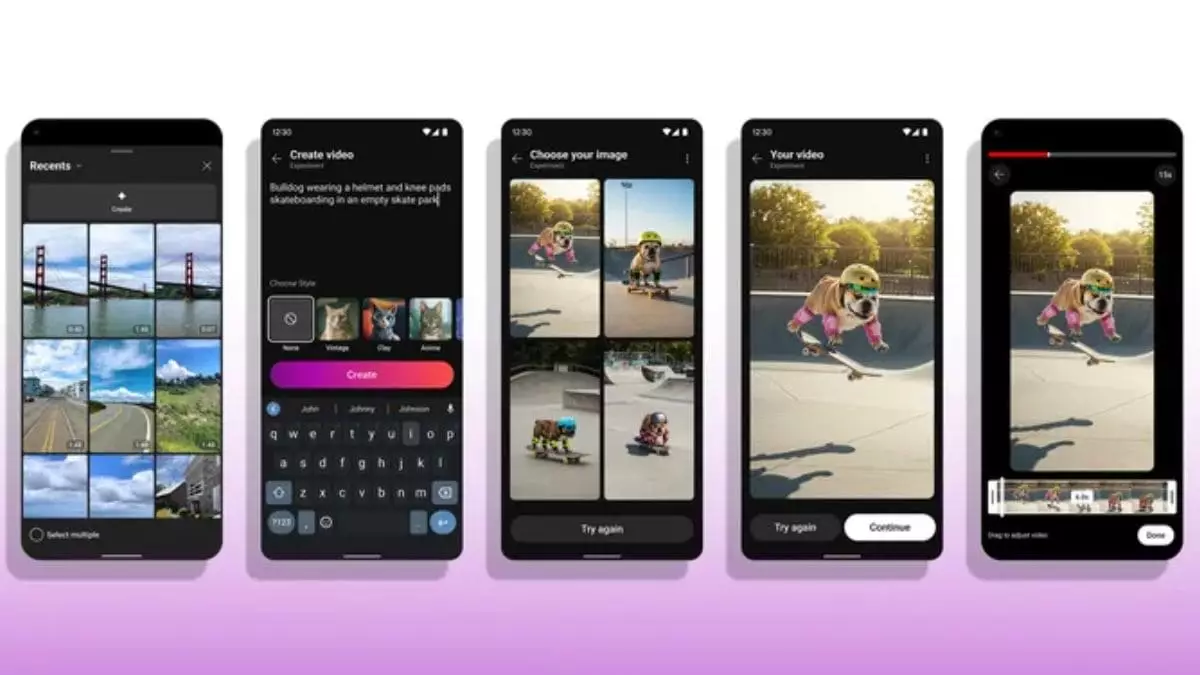YouTube has taken a significant step towards enhancing content creation on its platform by integrating advanced artificial intelligence capabilities. On Thursday, the video-sharing giant announced the incorporation of Google’s Veo 2 AI model into its innovative Dream Screen feature. This addition transforms the way creators can generate video content, allowing them to seamlessly produce standalone AI-generated videos. The functionality is designed not only to enrich the creative process but also to provide solutions for creators facing challenges in sourcing specific footage or translating imaginative ideas into visual formats.
Previously, the Dream Screen feature enabled YouTube creators to enhance their videos by adding AI-generated backgrounds. However, the expansion into full-scale video generation marks a pivotal evolution in its utility. Creators can now leverage this technology to create entire video segments, contributing to the popularity of YouTube Shorts, the platform’s initiative aimed at engaging viewers with short, vertical videos. The ease of producing content with simple prompts allows creators, regardless of their technical expertise, to incorporate unique visuals that might otherwise be difficult to attain.
The Veo 2 AI model, launched in December 2024 as the successor to the original Veo model, brings remarkable advancements in video realism and detail. According to Google DeepMind, this model exhibits improved capabilities in understanding cinematography, including various genres, lens effects, and camera movements. Such sophistication not only enhances the quality of AI-generated videos but also ensures creators can curate content that aligns with their artistic vision. This technology ultimately empowers content creators, encouraging more dynamic and innovative storytelling approaches.
To harness the capabilities of the Veo 2 model, creators need to navigate to the Shorts camera interface, where they can initiate the video creation process. By simply entering a descriptive prompt in the designated text field, users can instruct the AI to generate specific video content. The interface allows users to choose their preferred style and configure various length options for their videos. This intuitive process makes it accessible for anyone wanting to experiment with AI-generated content, regardless of their filmmaking background.
YouTube is also taking proactive measures to address potential ethical concerns associated with AI-generated content. The platform plans to incorporate SynthID watermarks on all videos created with the AI feature, a strategic move aimed at combating the proliferation of deepfakes. This transparency ensures that viewers are aware of the nature of the content they are consuming and helps maintain the platform’s integrity.
Currently, the AI video generation feature is available exclusively in Australia, Canada, New Zealand, and the United States. However, as YouTube continues to innovate, there is significant potential for this technology to reshape how users engage with video content globally. The influence of AI in video creation could lead to a new wave of creativity, fostering an environment where imaginative ideas can flourish without the constraints of conventional production limitations. As video content continues to evolve, this remarkable integration of artificial intelligence signals a bright and transformative future for creators on the platform.

